DePIN [2024] Guide: The Future of Decentralized Physical Infrastructure

Kevin Dwyer
February 20, 2024
8 min read
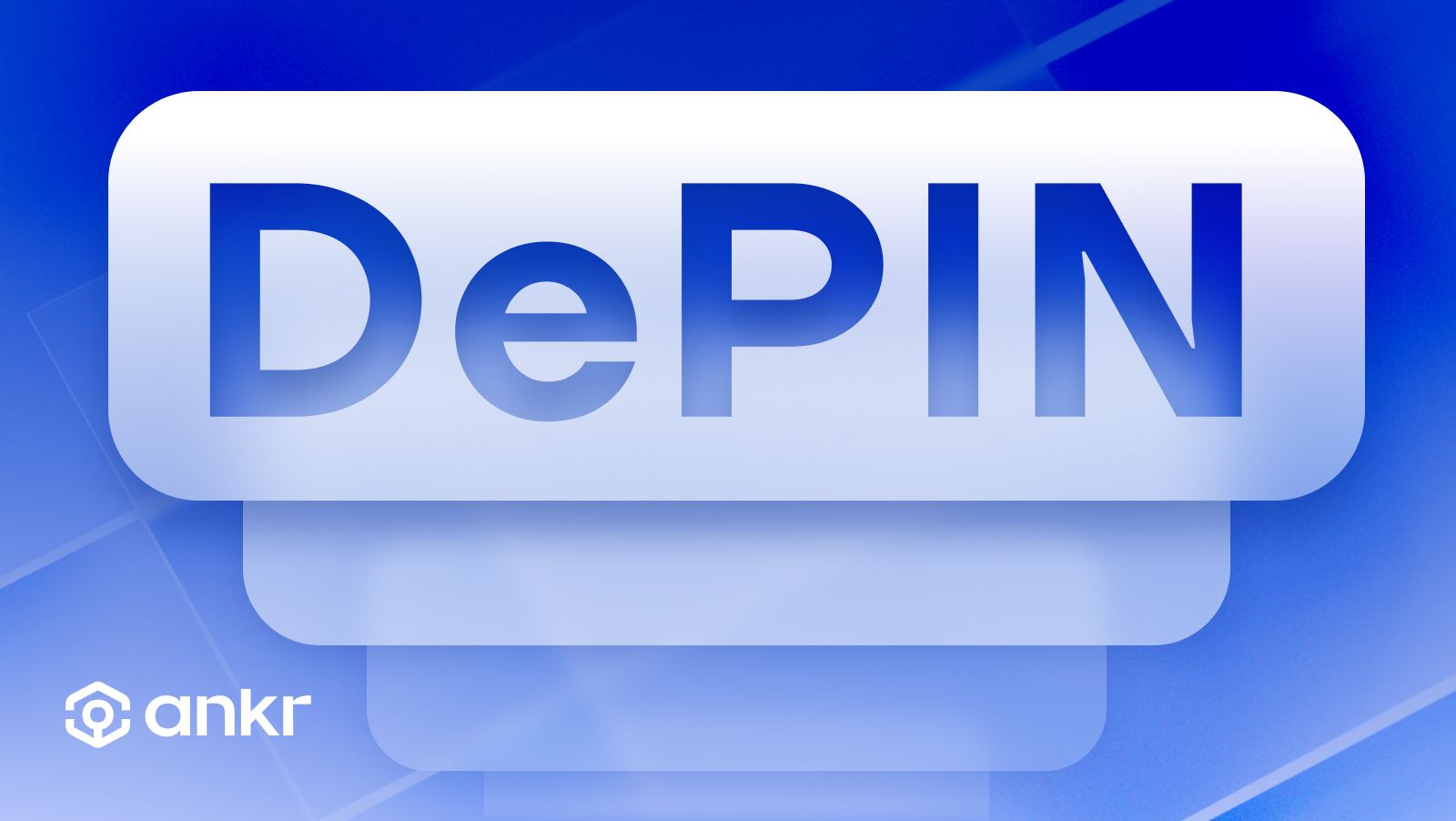
For at least 15 years, the tech world has been deeply entrenched in the ideas of aggregating the physical assets of everyday individuals to create entirely new industries like the “sharing economy ”. Players like Uber and Airbnb were able to create more **powerful and widespread services by combining the cars and houses of millions of people – a feat that would be extremely difficult to achieve by one company purchasing all those assets alone. However, these are centralized companies coordinating (and benefiting from) the efforts of their drivers, hosts, and users.
Another trend of the past 15 years has sought to answer an important question: what if we could skip the middleman and do business peer-to-peer? What if we could benefit from sharing the services of our computers, cameras, hard drives, or any other equipment without paying a third party?
We are beginning to see blockchain and Web3 answer these questions and break their tethers to the virtual realm while translating their potential into the messy, physical world we inhabit. That's where DePIN, Decentralized Physical Infrastructure Networks, enters the stage.
What Is DePIN, Really?
Decentralized Physical Infrastructure Networks harness blockchain technology and crypto incentives to conglomerate and coordinate resources that exist in the real world. This is an extremely powerful idea as it can change the way we provide and source goods and services.
Now, it doesn’t take long to realize that totally decentralized versions of personnel and litigation-intensive services like Uber could get dicey. However, the ability for developers to crowdsource the number of resources that would normally make competing in a space like cloud computing, AI, communication networks, or other digital-native services could be a game changer.
In their report on the topic, Messari found that DePIN can generally be separated into two camps:
-
Physical Resource Networks (PRNs): These networks use blockchain and token incentives to entice people to lend the use of theirhardware or equipment to offer tangible goods andservices that affect the real world. Think of a decentralized network of physical solar panels that contribute renewable energy to offset carbon emissions in return for token rewards.
-
Digital Resource Networks (DRNs): These networks incentivize people to lend their hardware for efforts that affect the digital realm. Think of a network of blockchain validator nodes or a decentralized data storage network.
DePIN Projects Outpacing Centralized Counterparts
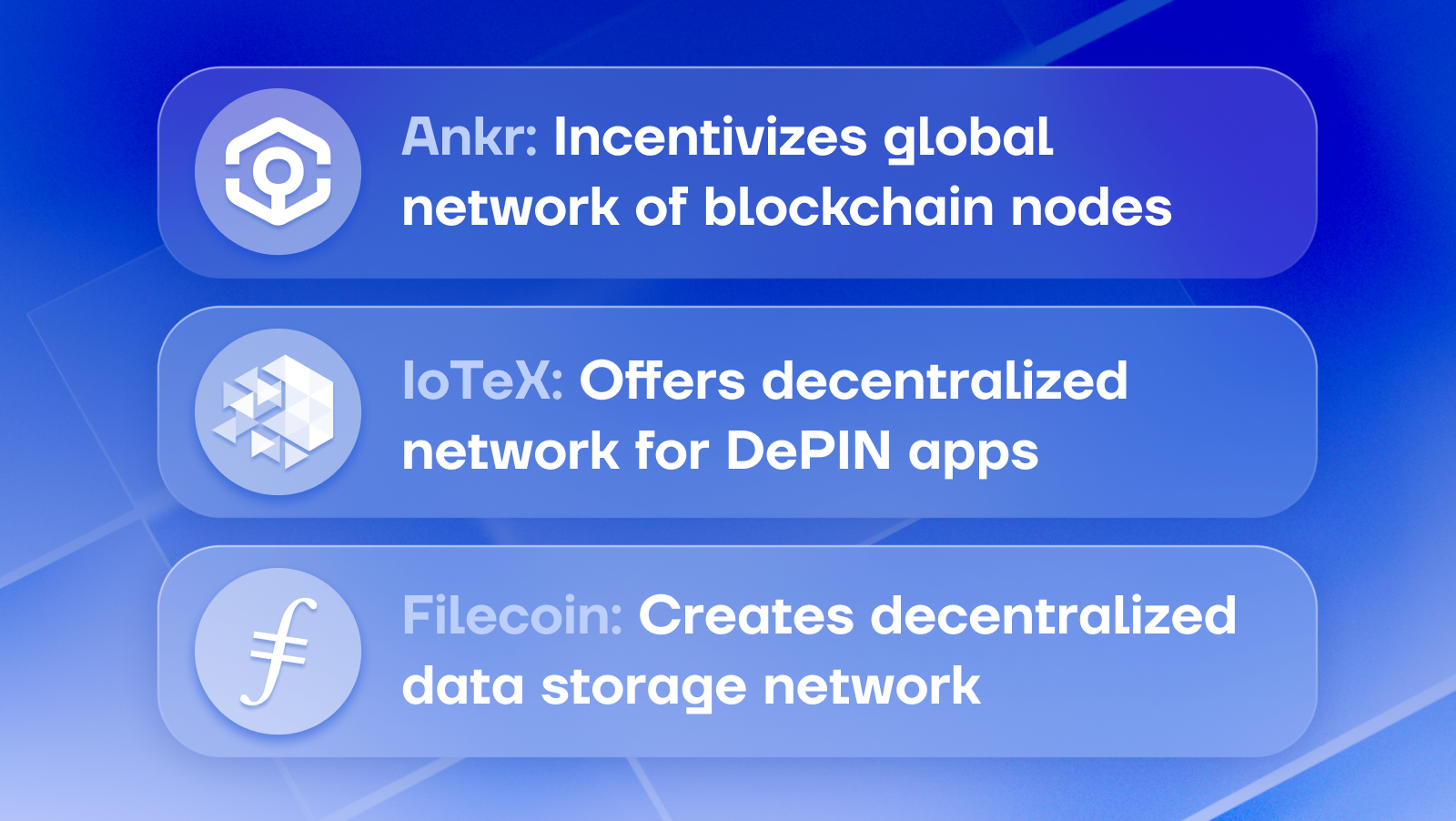
-
Ankr: Since 2017, Ankr has been aggregating and harnessing the power of servers all over the world to run blockchain nodes and provide a vital service for developers – RPC API connections to any decentralized network they need to connect to. Ankr’s Ultra Sound Infrastructure network incentivizes node operators to join the infrastructure network and receive rewards in the ANKR token which is also used as payment for API services. The ANKR token is one of the most important DePIN cryptocurrencies.
-
IoTeX: As a popular supported blockchain on Ankr’s RPC Service, IoTeX offers a home for those eager to deploy new dApps with use cases like the Internet of Things (IoT) and the closely related DePIN. With a comprehensive set of DePIN development tools and a blockchain to deploy use cases to, IoTeX has become home to DePIN projects crowdsourcing WiFi hotspots, weather stations, cameras, smartphones, and more.
-
Filecoin: Another protocol supported by Ankr infrastructure, Filecoin is a decentralized storage network designed to store humanity’s most important information (and everything else). Filecoin’s protocol offers an open-source marketplace for cloud storage, incentivizing a collection of global providers to provide a more distributed and decentralized network of physical servers than cloud providers can achieve.
What DePIN Synergy Can Offer

Source: Warner Bros. Pictures
Remember that scene from The Dark Knight where Batman somehow hacks every cellphone in Gotham to create real-time sonar imaging of the city? That sort of powerful aggregation and coordination is key to the idea of DePIN. Imagine if the owners of all those cell phones had volunteered their devices to transmit the sonar frequency as part of a network to stop crime. What they would be doing is forming a Decentralized Physical Infrastructure Network working toward a common goal. Heck, they could even be incentivized with Batcoin every time their phone is pinged by the Bat protocol.
The point is, that one computer or phone on its own doesn’t offer any extraordinary capabilities, but when you start to combine all of them, they become exponentially more powerful.
Some potential use cases for consideration:
DePIN: The Natural Evolution of Web3
Imagine DePIN as the missing bridge between the digital and physical worlds. It's not just about another flavor of the week crypto narrative; it's a long-term shift in how we can envision and implement infrastructure – the very backbone of our society. In many ways, DePIN is the natural next step of the Web3 ecosystem, bringing decentralized collaboration to the real world to compete with the status quo of traditional companies and organizations.
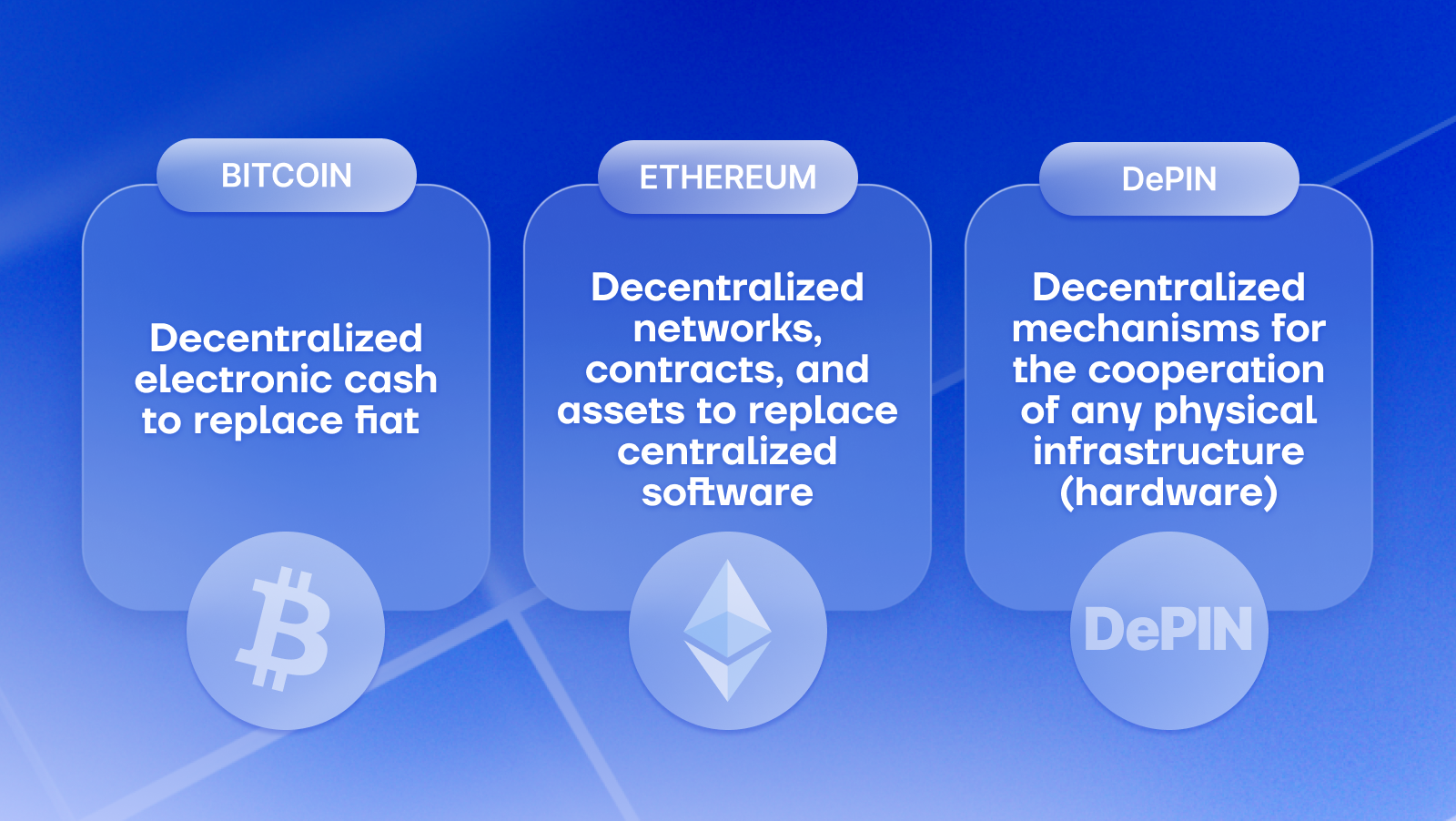
Think of the stepping stones like this:
- Bitcoin = Decentralized electronic cash to replace fiat
- Ethereum = Decentralized networks, contracts, and assets to replace centralized software
- DePIN = Decentralized mechanisms for the cooperation of any physical infrastructure (hardware)
The Promise of DePIN for Developers
DePIN offers a “flywheel” for developers and startups in Web3 to accelerate momentum for their projects and grow at a pace that can outpace traditional companies.
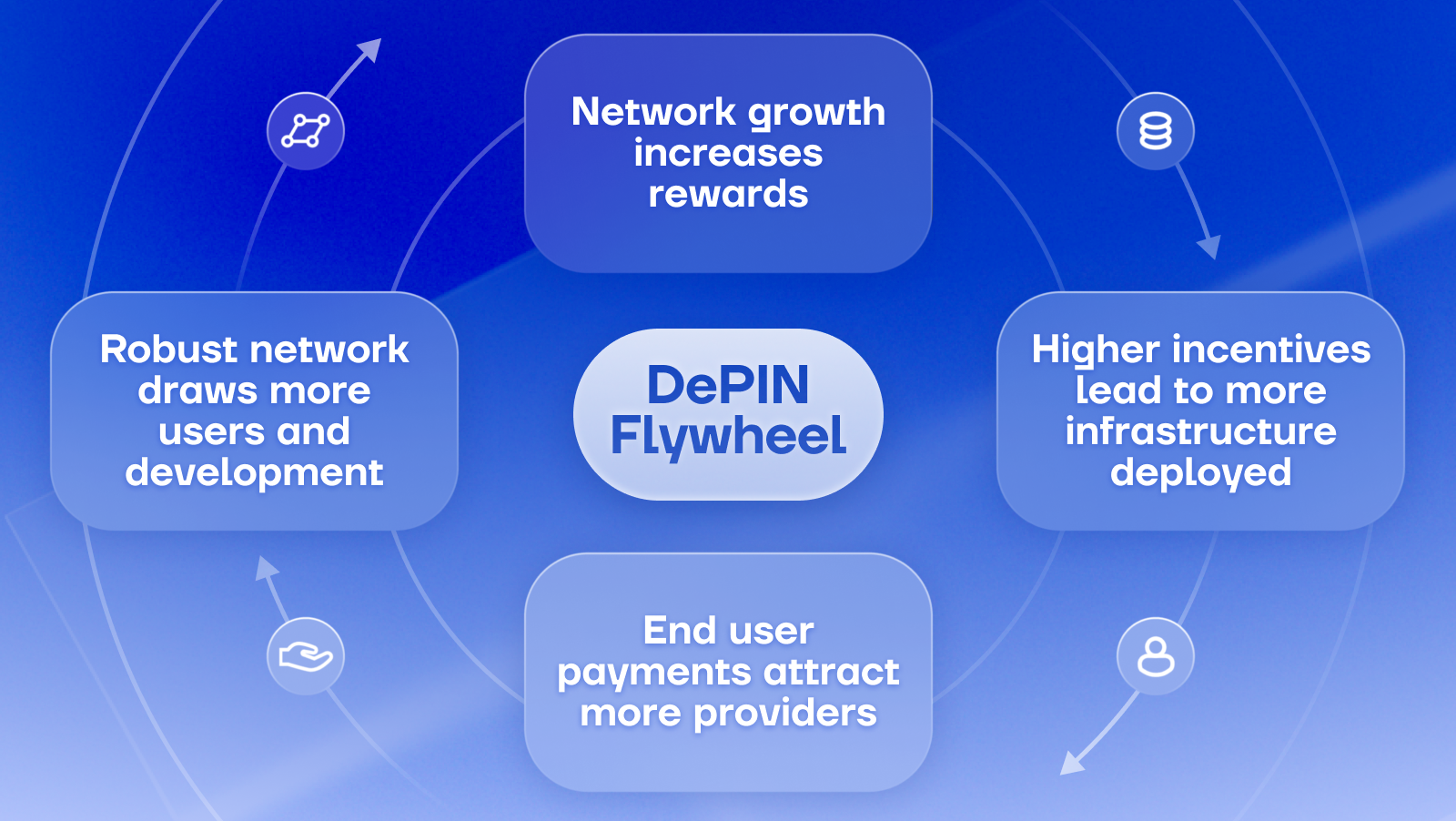
"Technology is best when it brings people together." - Matt Mullenweg, founder of WordPress.
-
Challenging Paradigms: Rethink the limitations of traditional infrastructure financing and management. DePIN offers an alternative for developers to build and scale projects with drastically reduced upfront costs and operational overheads.
-
Community-Powered Networks: By crowdsourcing hardware and maintenance through incentivized network members, DePINs dismantle the need for massive capital expenditures and centralized control.
-
Blockchain-Fueled Efficiency: DePIN eliminates intermediaries and unlocks seamless, secure peer-to-peer activity and payments for network participants.
-
Leveling the Playing Field: DePINs democratize infrastructure access by slashing entry barriers and paving the way for diverse players and disruptive ideas to challenge established giants in stagnant industries.
Examples of Why DePIN Will Be Critical In 2024 and Beyond

1. Real-World Impact: It's no longer enough to talk about "changing the world" in the digital realm. DePIN brings blockchain's power to tangible, everyday things – our internet access, energy grids, even our supply chains. Imagine DePIN-powered networks offering affordable internet to unconnected areas, resilient energy grids built by individual households, or peer-to-peer logistics networks bypassing congested ports. DePIN makes blockchain relevant, not just to tech enthusiasts, but to everyone.
2. Incentivizing Participation: DePIN is all about active engagement. Users become stakeholders, directly contributing to the network and earning rewards for their efforts. This creates a virtuous cycle – the more participants, the stronger the network, the more valuable the tokens, attracting even more participants. It's a self-sustaining ecosystem fueled by shared incentives, a far cry from the top-down model of traditional infrastructure.
3. Unleashing Innovation: With centralized control comes stagnation. DePIN opens the door to a wave of innovation. The modularity and permissionless nature of decentralized networks allow anyone to build on top of them, creating new applications and services we can't even imagine yet. Imagine DePIN-powered sensors monitoring air quality in real-time, or autonomous drones delivering medical supplies in remote areas. This is a future DePIN can unlock.
4. Building Trust, Block By Block: Blockchain's core strength lies in its trustless nature. DePIN leverages this to create transparent, tamper-proof infrastructure networks. Every contribution, every transaction, is etched onto the immutable ledger, fostering trust between participants and eliminating the need for intermediaries.
Build the Future of DePIN With Ankr
Since Ankr’s founding, we have been dedicated to providing infrastructure for every layer of the blockchain ecosystem. Developers can harness our DePIN network of blockchain nodes to build their own project that bridges the gap between Web3 and the real world.
-
Develop Applications On DePIN Blockchains: Ankr is building the future of distributed Web3 infrastructure, servicing dozens of Proof-of-Stake chains with an industry-leading global node delivery system, RPC aggregator, and suite of multichain development tools. Ankr currently serves over 2T transactions a year across Web3 and is the main infrastructure provider for BSC, Fantom, and Polygon chains as of 2023.
-
Build Your Own DePIN Network: Ankr offers a diverse range of options for launching your blockchains with customizability at every level for infrastructure built around your application. As the approved infrastructure partner for building app-specific blockchains on ecosystems like the BNB Smart Chain, Polygon, Avalanche, and zkSync, Ankr simplifies blockchain development for all use cases. Ankr creates blockchains for projects while satisfying every requirement for infrastructure and engineering like validators, RPC nodes, block explorers, testnets, staking platforms, and more for completely custom blockchain solutions.
-
Utilize Innovative Validation Solutions: Ankr creates next-generation solutions for supporting validation on 9+ proof-of-stake chains with an industry-leading node delegation system and security. With a Total Value Locked of over $500M, Ankr is the 3rd largest Ethereum staker and go-to staking infrastructure provider for ecosystems like the BNB Smart Chain, Polygon, and more.
Decentralized Physical Infrastructure - Final Thoughts
DePIN is not just a technological shift; it's a fundamental change in how we approach infrastructure and trust. It's about empowering individuals, unleashing innovation, and building a more resilient, inclusive future. 2024 may be the year the bridge between the digital and physical worlds starts to take shape, with DePIN as the cornerstone. This is not just another crypto narrative; it's the foundation for a future built on decentralization, transparency, and shared prosperity.
Join the Conversation on Ankr’s Channels
Twitter | Telegram Announcements | Telegram English Chat | Help Desk | Discord | YouTube | LinkedIn | Instagram | Ankr Staking
Similar articles.
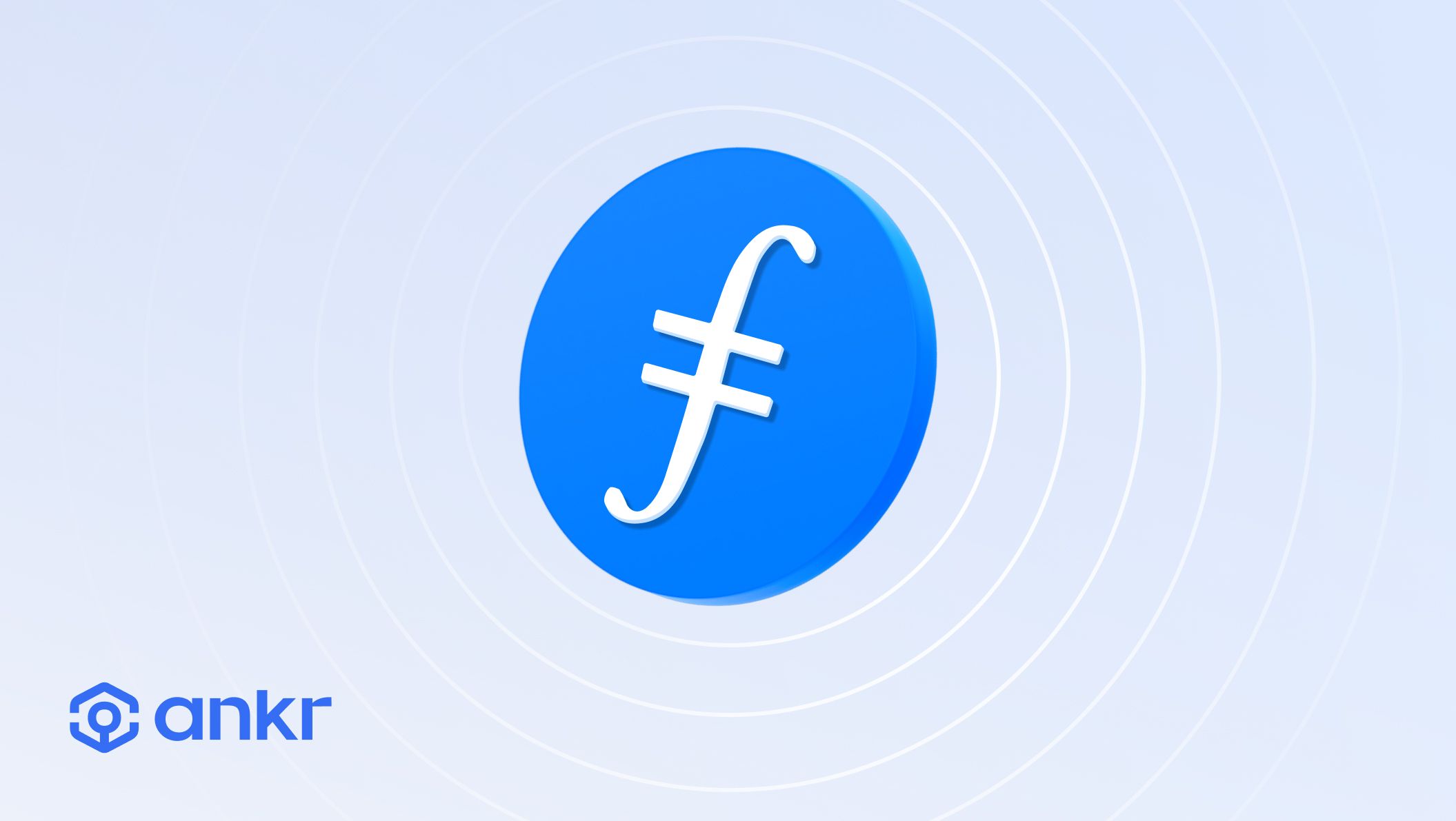
Ankr’s New Filecoin RPC Connection Is Live!

Kevin Dwyer
March 15, 2023
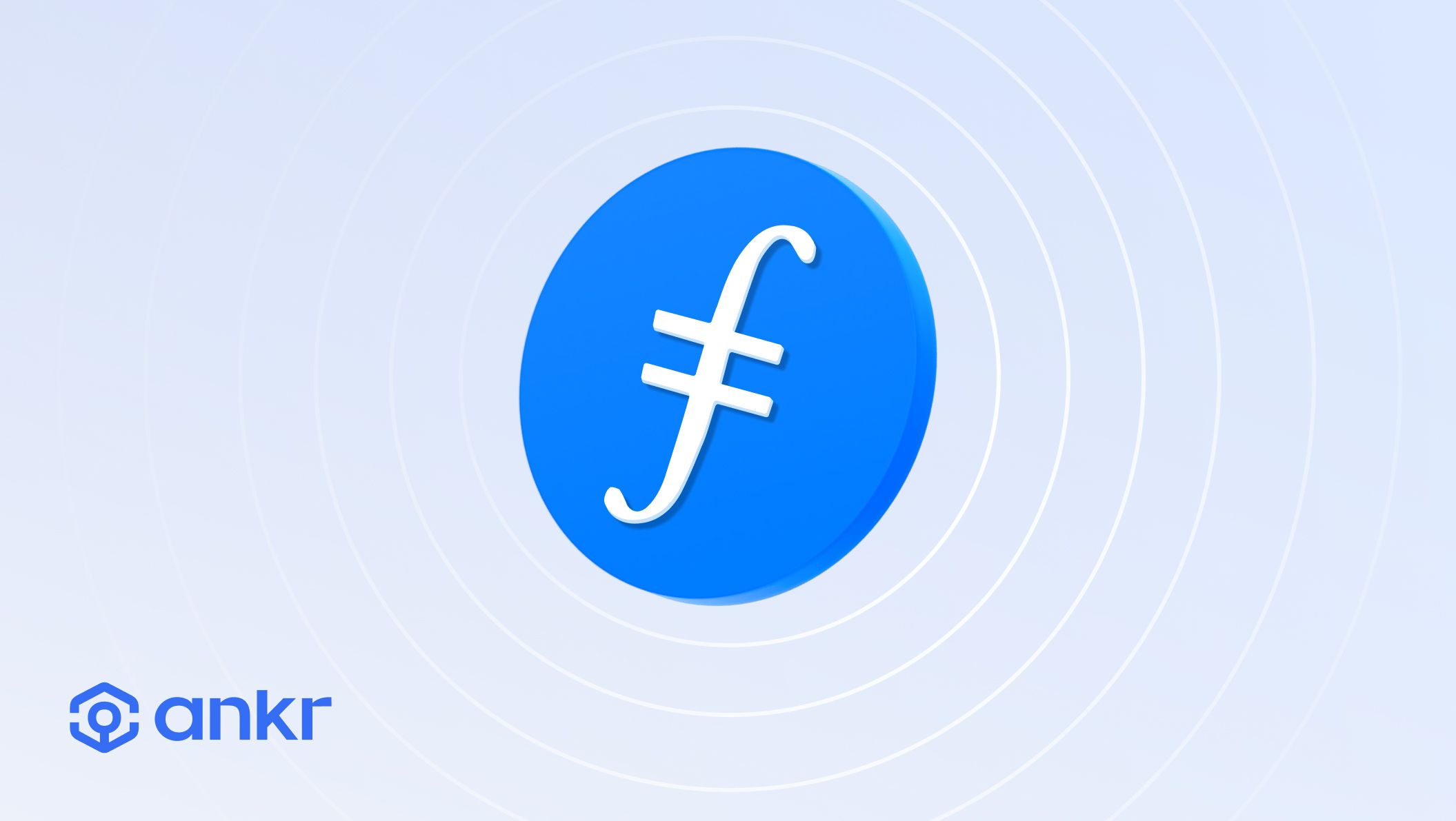
**Ankr is now offering Filecoin hosted nodes as a service, allowing Web3 apps and developers to easily communicate with the Filecoin storage network in advance of...
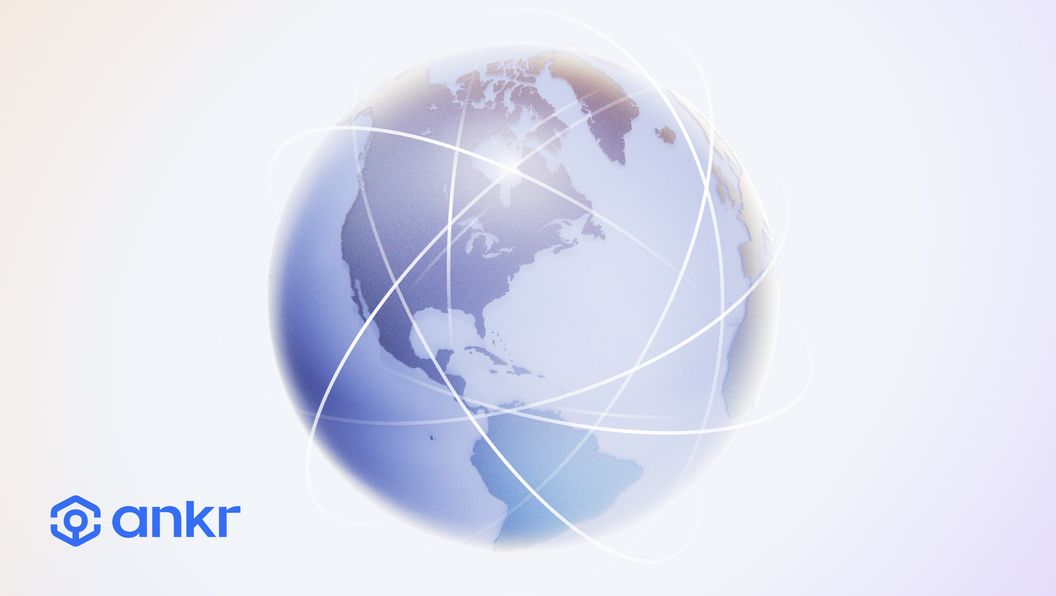
Ankr's RPC Performance Advantage: Global Bare-Metal Node Infrastructure

Kevin Dwyer
April 7, 2023

Web3 is a truly global movement that serves every country and corner of the world. The crypto industry never sleeps – and the 24/7 markets...




